Living off the grid might seem like a daunting prospect, particularly when considering the initial financial outlay. Yet, when viewed as an investment into a self-reliant, sustainable lifestyle, the perceived financial cliff transforms into a pathway to freedom. The key is to calculate not just the initial costs, but also the potential savings and benefits that come with this lifestyle change.
Here are some key takeaways:
- Off-grid setup costs can range from $30,000 to $60,000, but can lead to significant yearly savings.
- Various incentives and subsidies can help offset initial installation costs.
- Persistence and patience are crucial to the off-grid journey.
- Off-grid improvements can significantly increase your property’s value.
- The freedom and self-reliance gained from off-grid living are invaluable.
How to Calculate the Initial Cost of Living Off the Grid
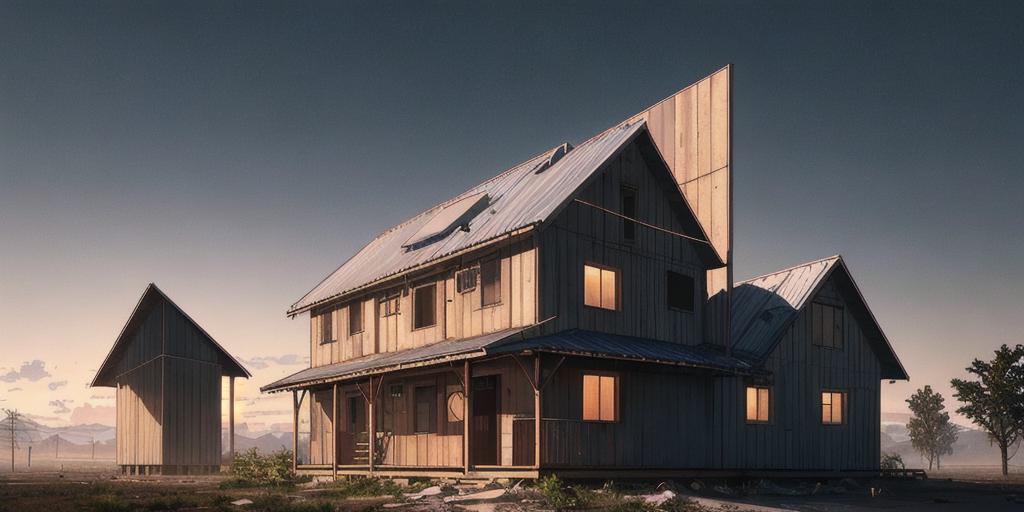
Demystifying the Initial Off-Grid Investment
Stepping off the grid might initially seem like stepping off a financial cliff. But let’s shift the perspective. Rather than viewing it as a hefty expense, consider it a savvy investment, a ticket to a new lifestyle that pays dividends in freedom, self-reliance, and monthly savings. It’s essential to not limit your budget initially, but to calculate your energy and utility savings against any costs, as suggested by this Homestead Guru article.
Granted, the price tag of an off-grid setup can range from $30,000 to $60,000, encompassing solar panels, backup batteries, and a DC/AC inverter, as per Cuitandokter. However, an Australian study found that an investment of US$13,000 into off-grid living can lead to nearly $2,000 per year in savings. That’s not just a drop in the ocean, it’s a significant chunk of change that can refill your savings or make large credit payments.
Maximizing Incentives and Subsidies
Did you know that your off-grid improvements could be eligible for various incentives that make the cost of installation more palatable? The Database of State Incentives for Renewables & Efficiency maintains an extensive list of these benefits. It’s worth your while to research what assistance you could be owed before you start limiting your improvements.
It’s a little like a treasure hunt, you dig into the details, and you might just strike gold. There are numerous incentives available, and knowing what you’re entitled to could dramatically reduce your initial outlay. The key here is not to rush, take your time, and ensure you’ve uncovered all potential subsidies.
Persistence and Patience: The Pathway to Off-Grid Living
One of the most understated qualities needed for off-grid living is patience. It’s a journey, not a quick sprint. If your plans don’t come together immediately, don’t be deterred by setbacks. It’s in these moments that you should persist and continue adjusting your plan.
Take, for example, the art of growing food. It might not always be immediately obvious to a novice, but the Royal Horticultural Society of the UK notes that there is a variety of techniques to grow fresh produce. It takes time and effort to be fully integrated with an off-the-grid lifestyle, and reverting your work will obviously cost money. Stay patient, commit to your new lifestyle, and adjust how you manage money in a viable way.
Remember, going off-the-grid isn’t just about escaping the 9-5 grind or moving closer to nature. It’s about reshaping your life and your finances. It’s about carving out a space for yourself in the world that aligns with your values, your desires, and your dreams. It’s about living life on your own terms. And that, dear reader, is priceless.
The Average Monthly Expenses of Off-Grid Living
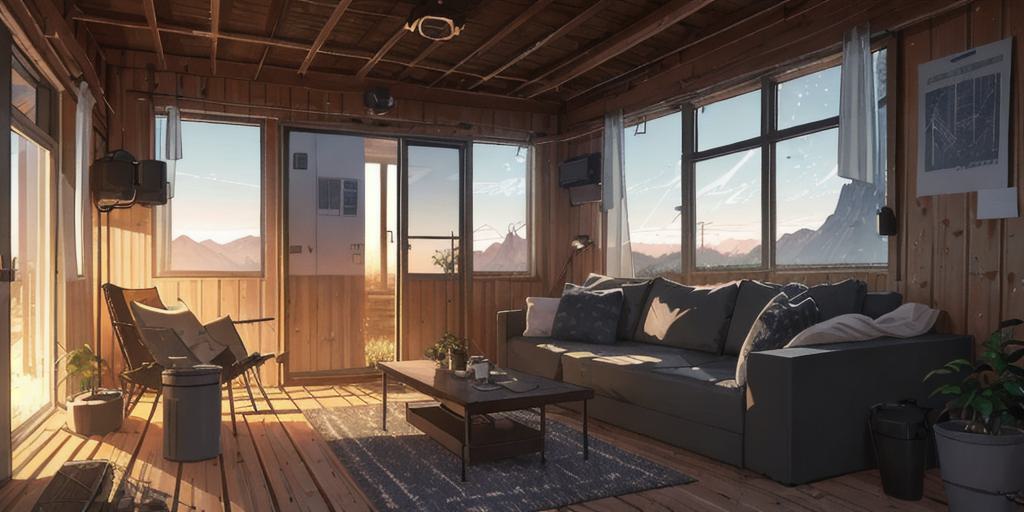
The Expense Spectrum of Off-Grid Living
The cost of off-grid living can paint quite a varied picture, much like a spectrum. On one end, according to Why I Enjoy, the monthly expenses could be as low as $35. This minimalistic scenario might involve living in a frugal, self-built tiny home, utilizing solar energy, cultivating a garden, and harnessing rainwater.
On the other end, monthly expenses can skyrocket to $2,200. This would be for those who choose a more luxurious off-grid lifestyle, possibly including a larger, professionally-built home, a more extensive renewable energy setup, and even a few home comforts brought from the grid.
Remember, it’s not about finding the cheapest way to live off-grid, but about finding the right balance that suits your lifestyle and comfort levels. It’s about achieving a sustainable lifestyle that brings you joy and connection to nature.
Lifestyle Choices: The True Cost Determinant
As a photographer discovered during his two-month journey through California, documented in Vice, there’s no one-size-fits-all approach to off-grid living. He encountered individuals living in treehouses, floating wooden homes, desert yurts, and mobile trailers. They all had tailored their living arrangements to their individual needs and interests, proving that there are countless ways to live off the grid.
Each of these unique lifestyle choices will carry its own cost. For instance, building a cob house from mud and straw could be a cost-effective and environmentally-friendly option, while living on a sailboat might require a higher initial investment but offer the freedom to explore the ocean whenever desired.
It’s critical to remember that your off-grid living costs are largely dictated by your lifestyle choices. So, dream big, but also plan realistically. It’s all about crafting a life that aligns with your values, not just your wallet.
Cost-Effective Locations for Off-Grid Living
Geographical location can significantly influence the cost of living off the grid. For example, Off Grid Permaculture rates Alabama as the top state for off-grid living due to its low cost of living, inexpensive land costs, and low property taxes.
But don’t limit your search to just one region. With the flexibility of an off-grid lifestyle, you can find affordable and suitable locations across the globe, from the lush wilderness of Canada to the affordable city of Fort Wayne, Indiana.
When choosing your off-grid location, consider factors like climate, soil quality, local regulations, and accessibility to resources. Remember, the goal is not just to survive off the grid, but to thrive.
The Cost of Solar Panels and Other Energy Sources

Cracking the Solar Panel Price Tag
The realm of solar panels, much like any other technology, has its own language. It’s a realm where the magic happens when sunlight meets silicon, and power is born. But before you start harnessing that magical sun-kissed power, let’s crunch some numbers. According to the data from Heritage Home, the cost of solar panel installations has significantly dropped over the years. Thanks to technological advancements and government incentives, solar can now be a wallet-friendly, long-term investment. But remember, it’s not just about the initial cost. It’s about the long-term return on investment.
The Long Game: Solar Power ROI
Embracing the solar lifestyle isn’t just about going green. It’s also about seeing green. Just like a well-bought stock, your solar panels are an investment that can offer significant returns. The sun-blessed folks over at Top Solar Panel Guide remind us that solar panels save families from monthly energy expenses. In fact, with the right conditions, you might produce excess electricity that you can sell back to the grid. Now, that’s an investment that shines.
Stepping Beyond Solar: Other Renewable Energy Sources
While the sun is a powerful ally in our quest for renewable energy, it’s not the only player in the game. It’s always wise to keep an eye on the horizon for other energy sources that can complement your solar setup. As the folks at Business Insider suggest, the Age of Renewables is just beginning. Wind power, hydraulic energy, and even biomass could become valuable additions to your energy portfolio. After all, variety is the spice of life, and a diversified energy mix can secure your off-grid lifestyle.
Remember, off-grid living isn’t about sacrificing comfort for independence. It’s about weaving a lifestyle that aligns with your values, takes advantage of technological advancements, and embraces the harmony of living with nature. It’s about using the power of the sun, wind, and water to light up your life and reduce your carbon footprint, all while potentially adding a few extra bucks to your pocket. Now, isn’t that a bright idea?
How to Build Your Own Off-Grid Home
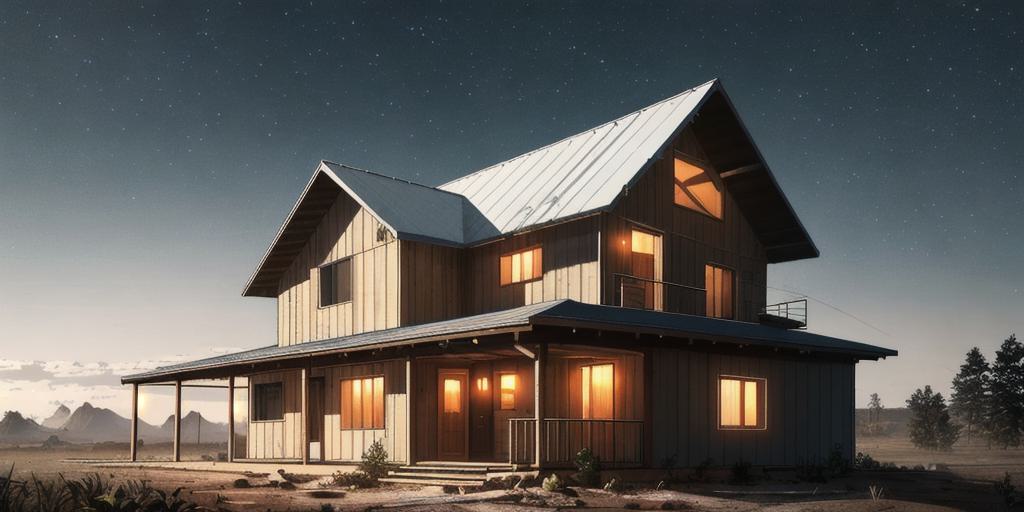
Mastering the Art of Off-Grid Construction
Building an off-grid home is not merely an architectural endeavor, but a bold statement of independence and a leap towards self-sustainability. It’s akin to painting your own canvas, where every stroke, every choice you make, contributes to the masterpiece that is your home. As Morgan Hager, a pioneering off-grid homeowner in Ohio, puts it, “There’s a sense of freedom, to be able to say, ‘oh, there’s this thing I need, and I have a toolbox and can make it.’“
However, it’s essential to remember that building an off-grid home isn’t about constructing an isolated fortress. It’s about creating a living space that respects the environment, utilizes available resources efficiently, and blends seamlessly into the landscape. As Forbes suggests, harnessing the environment’s offerings can dramatically reduce the workload of your off-grid system.
Choosing the Ideal Location: Embracing the Elements
Choosing the right location for your off-grid home is crucial. You need to consider the quality of the soil, the amount of rainfall, and the local climate. By understanding these elements, you can maximize your home’s efficiency and minimize its impact on the environment.
It’s not just about finding a picturesque location, but about understanding the dance of the sun, the whisper of the wind, and the rhythm of the rain. As architect Lisa Moffitt points out, “In terms of going off-grid, the importance of reducing electrical demand can’t be overstated. The technologies are reliable, and there is something very satisfying about knowing that your home is running in a way that is attuned to larger natural cycles.“
Designing with Purpose: Building a Sustainable Home
Designing your off-grid home is much more than just plotting out rooms and fixtures. It’s about creating a sustainable, energy-efficient space that complements your lifestyle. The layout, window placements, and choice of energy-efficient appliances all contribute to the overall efficiency of your home.
Every square foot matters in an off-grid home. As Stephanie Horowitz, a managing director at ZeroEnergy Design, explains, “Every square foot you don’t build is energy saved. Scrutinizing the program and being creative with space is key.“
Remember, going off-grid is about creating a home that lives and breathes with the environment, using what nature provides to create a self-sustaining living space. It’s about embracing the freedom of the open skies, the tranquility of the wilderness, and the potential of renewable energy. It’s about crafting a lifestyle that not only respects the environment but thrives within it.
The Cost of Water Collection and Purification Systems

Embracing the Power of UV Purification
Water is the lifeblood of our off-grid existence – it’s the element that pulses through the veins of our homestead, keeping us, our plants, and our animals alive and thriving. But water, like all precious resources, requires careful management. One of the most effective ways to ensure a safe, clean water supply is through Ultraviolet (UV) water purification. It’s a technology that works in harmony with nature, using the power of UV light to kill harmful microorganisms in the water. It’s quick, efficient, and doesn’t alter the taste or colour of the water. As Kutchina explains, it’s like having a miniature sun in your water system, radiating life-giving energy while eliminating potential threats.
Investing in Efficient Water Purification
Choosing a water purifier is akin to choosing the right tool for a job – it has to be fit for purpose, reliable, and cost-effective. The good news is that UV water purifiers are generally quite affordable, both in terms of initial cost and ongoing maintenance. According to a report by MarketWatch, the global market for water purification units is expected to grow significantly over the next few years, which means more choice and competitive pricing for consumers.
However, it’s important to remember that not all water purifiers are created equal. Some are more efficient than others, and some have additional features that may be beneficial, such as reverse osmosis or ultrafiltration. So, it pays to do your research and invest in a system that meets your specific needs and circumstances.
Adopting a Proactive Approach to Maintenance
A water purification system is not a set-and-forget solution. It requires regular maintenance to ensure it continues to perform at its best. This means cleaning the internal parts regularly to prevent buildup of minerals and debris, and replacing the UV lamp as needed. According to AlkalineAnytime, the maintenance tips are simple but crucial, and could make a significant difference to the lifespan and efficiency of your water purifier.
Ultimately, the cost of living off the grid is not just about the financial investment, but the time and effort you’re willing to put into managing your resources effectively. By embracing technologies like UV water purification and adopting a proactive approach to maintenance, you can ensure a safe, reliable water supply for your off-grid home.
The Cost of Growing Your Own Food Off the Grid
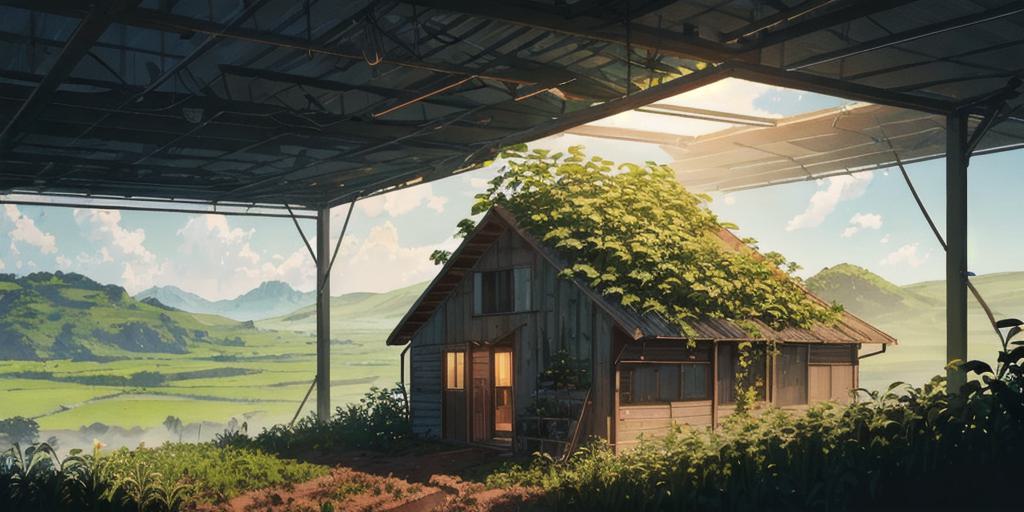
Powering Your Off-Grid Homestead
To grow your own food, you need more than just seeds and soil. You need power. Much like the heart pumps blood to every cell in your body, electricity is the life force that powers your off-grid homestead. From running farm equipment to lighting up your home, electricity is a necessity. As NaturalNews aptly puts it, off-grid living means not being connected to a utility system. It’s up to you to generate your own power.
Many off-grid enthusiasts tap into the reliable energy of the sun through solar power. However, it’s important to remember that managing energy demand and being more energy-efficient is crucial. You want to generate only as much electricity as you need daily. Batteries, while they may double the cost of a solar panel system, allow you to use the power harvested during the day at night or when it’s cloudy. Furthermore, a generator can serve as a backup for your batteries, although this does come with additional fuel costs.
Creating a Self-Sustaining Agricultural System
When it comes to growing your own food off-grid, it’s not just about planting a garden. It’s about creating a self-sustaining agricultural system that operates in a closed loop. Consider the innovative approach of ReGen Villages, where household food waste is composted and fed to flies, which in turn feed fish, which then fertilize aquaponic gardens. This approach allows for the output of one system to become the input of another, creating a regenerative cycle that maximizes efficiency and sustainability.
Each family in these villages has an attached greenhouse for growing personal crops, and communal farms and livestock are managed and run by staff. And it’s not just about growing food. It’s about growing food in a way that’s harmonious with the environment. Cutting down on waste or finding ways to reuse it goes hand-in-hand with generating clean energy on an off-grid homestead.
Understanding the Financial Implications
Living off the grid and growing your own food is not just about self-sufficiency and sustainability. It’s also about understanding the financial implications. There are costs associated with setting up renewable energy systems and buying the necessary equipment to grow your own food. And while it may seem daunting, remember that each investment you make is a step towards a lifestyle that is unhurried, healthy, and in tune with nature.
As Forbes points out, there are many individuals who choose to live off-grid for different reasons, from being inspired by the climate crisis to seeking a simpler, lower-cost life. Whatever your motivation, living off-grid and growing your own food can be a rewarding journey of self-discovery and resilience.
The Benefits of Living Off the Grid: Savings and Independence

Embracing the Freedom of Financial Independence
Stepping off the grid is akin to jumping into a pool of financial freedom. As you sever ties with utility companies, your monthly bills evaporate, leaving you with more disposable income than you might have imagined. You’re no longer subject to the whims of fluctuating energy prices, or held hostage by blackout periods. Instead, you become the master of your own kingdom, generating your own power, and maintaining your own systems. This can be an empowering and liberating journey, where every step you take is a stride towards financial independence.
As Just News outlines, the initial costs of setting up an off-grid lifestyle can seem daunting. However, the long-term savings, coupled with potential tax breaks, grants, and other incentives, can make the lifestyle a financially viable option. Moreover, the financial implications extend beyond mere costs. Experiencing a life free from the constant worry of bills can be a game-changer, shifting your perspective on what it truly means to live a fulfilling life.
Nurturing a Deep Connection with Nature
When you live off the grid, you’re not just living in nature; you’re living with nature. You become intimately aware of the rhythms of the natural world, the shifting patterns of the weather, and the delicate balance of the ecosystem. From harnessing the power of the sun to harvesting rainwater, every aspect of your life becomes intertwined with the environment. You’re not just observing nature; you’re participating in it.
As Just News explains, this connection can be a deeply rewarding experience, fostering an appreciation for nature that’s difficult to cultivate in a traditional, grid-tied lifestyle. It’s about more than just living sustainably and reducing your environmental impact; it’s about forming a symbiotic relationship with the natural world, one that nourishes your soul even as it sustains your body.
Reducing Dependency and Gaining Self-Sufficiency
Living off the grid is about more than just breaking free from utility companies; it’s about breaking free from dependency itself. Utilizing self-contained systems within your off-grid homestead, as detailed in Publicist Paper, means reducing reliance on external systems and infrastructure. You’re no longer vulnerable to disruptions in these networks, which can be empowering. Becoming less dependent on external networks allows you to maintain a comfortable living environment even during power outages or other unforeseen circumstances.
This level of self-sufficiency can be a game-changer, imbuing you with a sense of control and independence that’s hard to match in a grid-tied lifestyle. Whether it’s maintaining your solar power system, composting your food waste, or repairing your utility trailer, every task you perform is a testament to your resilience and resourcefulness. It’s a lifestyle that’s not just about living, but about thriving.
The Drawbacks of Living Off the Grid: Isolation and Limited Access to Services
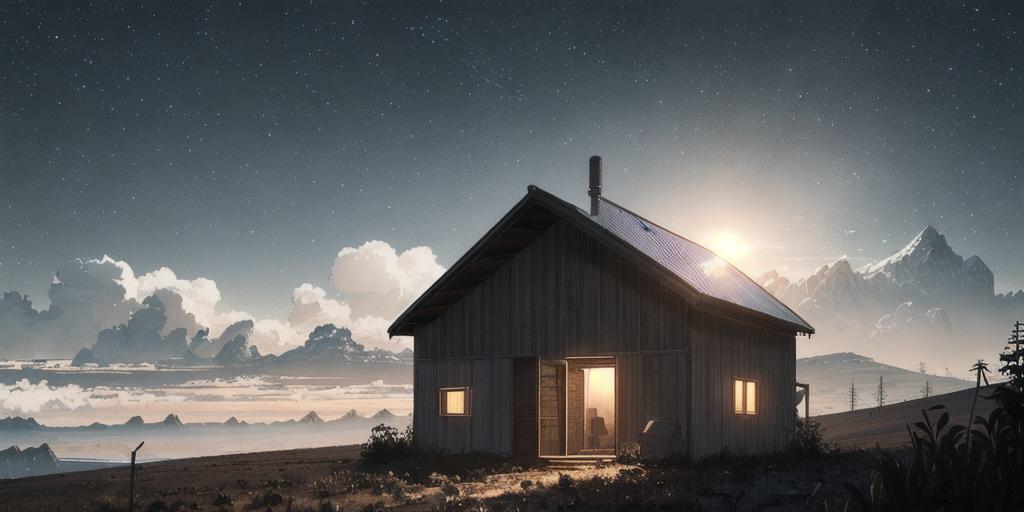
The Silent Companion: Isolation in Off-Grid Living
Isolation can be a double-edged sword. On one side, it offers a blissful retreat from the constant hustle and bustle of city life, a chance to take a deep breath and truly appreciate the wonders of nature. But the other side of the coin? It’s loneliness. It’s the absence of convenience stores, familiar faces, or even a reliable signal to connect you to the outside world. Your nearest neighbor might be miles away, and you’ll need to become comfortable with your own company. This solitude can be a challenge, particularly for extroverted individuals accustomed to the constant hum of social interaction.
However, remember the story of Rawa Othman who, from her desk in a high-rise in the Gaza Strip, reaches out to a wider world by translating the weirdest news she can find. Her story is a testament to the human ability to adapt and connect, regardless of physical boundaries. You might be physically isolated, but remember, you’re never truly alone.
Trading Convenience for Self-Reliance: Limited Access to Services
Stepping off the grid means stepping away from a world where services are a phone call or a click away. No more late-night pizza deliveries or quick visits to the local grocery store. If your off-grid home is situated in a remote location, even obtaining basic necessities could require a significant amount of travel.
Moreover, access to medical facilities could be limited, making emergency situations more challenging to handle. A fast response time can be a matter of life and death, and being off-grid may mean that help is further away than you’d like. Therefore, learning basic first aid and emergency response skills can be invaluable when living off the grid.
Straddling Two Worlds: The Challenge of Staying Connected
One of the biggest misconceptions about living off the grid is the idea that you must completely disconnect from the world. While it’s true that such a lifestyle encourages self-reliance and a more intimate connection with nature, it doesn’t necessitate complete isolation from society. In fact, many off-gridders find it essential to maintain some level of connection with the outside world, whether for work, family, or just to keep up with global events.
The digital nomad lifestyle, for instance, involves earning an income online while exploring different locations. Remote work, as exemplified by the Work Without Borders initiative in Gaza, allows individuals to connect with clients and colleagues worldwide, despite geographical or political constraints. As such, it’s entirely possible to live off the grid while still reaping the benefits of the digital age. It requires a delicate balance, yes, but isn’t that what life’s all about?
How to Find Affordable Land for Off-Grid Living

Demystifying the Quest for the Perfect Land
When considering an off-grid lifestyle, acquiring the right land is a critical first step and, often, a major hurdle. Like an intricate dance, the process requires grace, patience, and a keen sense of rhythm to identify the perfect piece of earth that fits not only your budget but also your dreams.
Off Grid Living recounts the journey of its director and owner, who dedicated years of research and countless hours of work to establish a personal homestead for his family to live a more sustainable lifestyle.
While obtaining land is a significant investment, it’s a one-time expenditure that, in the long run, can save you a considerable amount. Yet, it’s not just about the cost. It’s about finding a piece of paradise that resonates with your soul, a piece of land that whispers to you of potential and possibilities.
Location, Location, Location: The Holy Grail of Off-Grid Living
It’s a well-known mantra in the real estate world: location is everything. When it comes to off-grid living, the importance of location is amplified tenfold. The location of your land determines the quality of your soil, the accessibility of water, the quantity of sunlight, and even the strength of your Internet signal.
As detailed in an article from Move Assured, considerations for choosing a location should include the proximity to a water source, the availability of wood for building and fuel, and the quality of the soil for growing food. A good location could even mean the difference between needing planning permission or not, for those in the UK.
Remember, it’s not just about the physical location. It’s also about the community. A supportive, like-minded community can make the difference between a rough transition and a smooth one into off-grid living.
Overcoming Obstacles: The Art of Land Negotiation
Once you’ve found your dream location, the next challenge presents itself: securing the land. This part of the journey requires a cool head, a keen eye, and nerves of steel. It’s a dance between what you’re willing to pay and what the seller is willing to accept.
Don’t be disheartened if your first attempt doesn’t pan out. As with any significant decision, it’s essential to take your time, do your research, and be patient. Just as the off-grid lifestyle is a journey rather than a destination, so too is the process of finding affordable land.
Be prepared to negotiate, but also be prepared to walk away if the deal isn’t right. Remember, your dream of living off-grid is not just about surviving, but thriving. And to do that, you need to start on the right foot with the right land.
As you embark on your journey towards off-grid living, remember this: the road may be winding, the climb may be steep, but the view from the top is worth every step. So, lace up your boots and take that first step towards your off-grid dream.
The Role of Technology in Making Off-Grid Living More Affordable
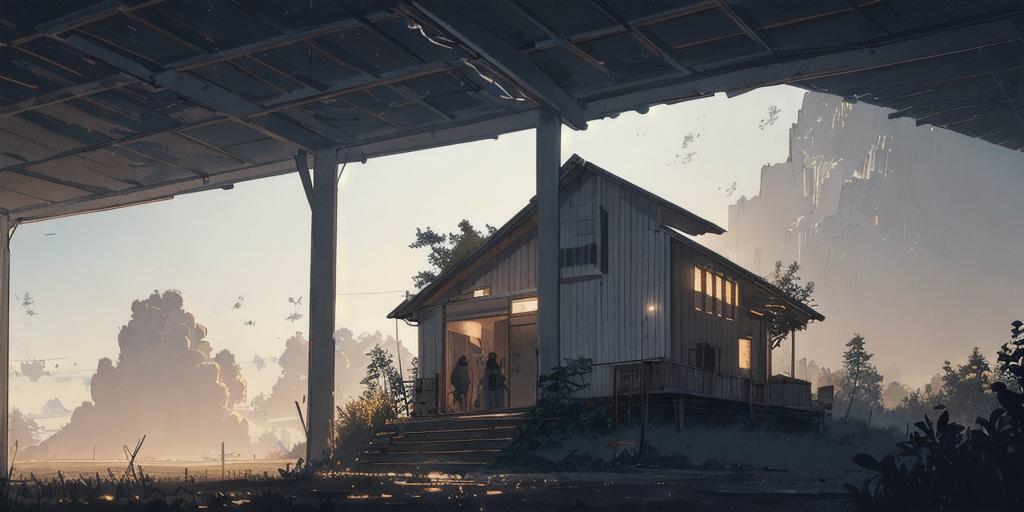
The Power of Solar Innovation
While the sun may not shine 24/7, technological leaps in solar energy are unlocking new potentials for off-grid living. As detailed in a study by the Michigan Technological University, solar energy, coupled with cogeneration and batteries, could overcome even the cloudiest of winter days. This triple-threat technology makes it economically feasible to leave the grid, with 92% of seasonal households and 65% of single-family owner-occupied households being able to do so by 2020.
Even in areas not traditionally known for abundant sunshine, like the Upper Peninsula of Michigan, solar energy is making strides. The costs of solar hybrid systems are dropping, making it an increasingly attractive option for homeowners. And with these systems, you become the master of your energy production and consumption – a liberating leap from reliance on the grid.
Internet Connectivity: A Non-Negotiable in the Off-Grid Equation
The vision of off-grid living often conjures up images of secluded cabins nestled in nature, away from the hustle and bustle. But does going off-grid mean going off the internet? Not necessarily. With the advancements in technology, it’s possible to disconnect from the power grid while staying connected to the world.
A team from the Northern Alberta Institute of Technology developed a sustainable and affordable way to provide internet access to remote areas. By harnessing solar power, they were able to fuel a Starlink broadband internet system, offering a powerful solution for off-grid dwellers who desire or need internet connectivity. Being off-grid doesn’t mean being off-line.
Democratizing Off-Grid Living with Solar and Fintech Innovations
The story of Azuri Technologies in Nigeria is a testament to the power of solar and fintech innovations in making off-grid living more accessible and affordable. Despite the challenges of mobile money adoption and regulatory constraints, Azuri has managed to make a significant impact, delivering solar home systems to remote Nigerian communities.
With a growing mobile penetration, aided by fintech and Pay As You Go solutions, the traditional barriers of revenue collection and high upfront costs are gradually being dismantled. The company has managed to impact about 100,000 people and created over 500 job opportunities, proving that the off-grid dream is not just possible, but can also be economically empowering.
So, as you contemplate the off-grid lifestyle, remember that technology and innovation are your allies. They have the potential to not only make off-grid living more affordable but also enhance your quality of life, even as you retreat from the urban jungles into the heart of nature.
Embrace the Off-Grid Revolution
Off-grid living, once viewed as a radical departure from conventional lifestyles, is experiencing a renaissance. The allure of self-reliance, financial independence, and a deeper connection with nature is resonating with an increasing number of people, transforming off-grid living from a fringe movement into a viable lifestyle choice.
The potential savings and benefits of off-grid living are substantial. From the initial setup cost of $30,000 to $60,000, you can expect significant yearly savings, increased property value, and an invaluable sense of freedom and self-reliance. With advantages like these, it’s no wonder that more and more people are choosing to step off the grid and step into a life of self-sufficiency and sustainability.
However, this lifestyle isn’t without its challenges. It requires patience, persistence, and a willingness to learn new skills. From mastering off-grid construction and water collection to understanding the financial implications of growing your own food and finding affordable land, off-grid living is a journey that demands a deep commitment and a strong desire for independence.
But amidst these challenges lie immense opportunities. With the advent of solar innovation and internet connectivity, off-grid living is becoming increasingly accessible and affordable. Companies like Azuri Technologies are harnessing the power of solar and fintech to democratize off-grid living, offering sustainable and affordable solutions to remote communities.
Living off the grid isn’t just about escaping the 9-5 grind or moving closer to nature. It’s about reshaping your life and your finances. It’s about carving out a space for yourself in the world that aligns with your values, your desires, and your dreams. It’s about living life on your own terms. And that, dear reader, is a journey worth undertaking.